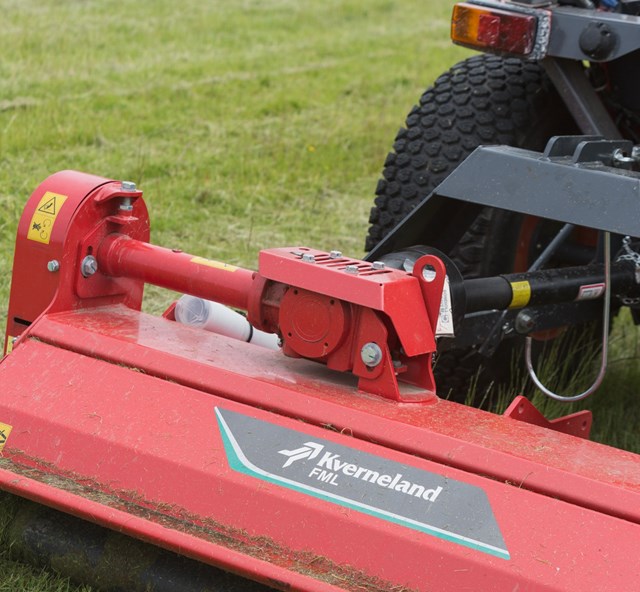Sportsturf student research highlights recruitment challenges in sector
- Published
- Thursday 1 Jul 2021
A University Centre Myerscough sportsturf degree student has published research into the recruitment and skills challenges currently facing the sector.

Amy Sullivan is undertaking a BSc programme in sportsturf, while working on the grounds staff at Whitgift School, in London.
Writing in Pitchcare magazine, Amy has highlighted the fact that the industry is facing a recruitment and skills crisis across all sectors:
A female perspective on the sportsturf industry – recruitment and diversity
The need to increase recruitment levels has been widely acknowledged as has the severe gender imbalance in the industry where only 3% of the UK sportsturf industry is female. A research project was devised to provide a female perspective on the sportsturf industry and to review issues relating to the recruitment of women.
The low level of recruitment of women compared to men into non-traditional industries such as arboriculture and construction can be linked back to historic gender based occupational segregation where manual industries are predominantly male dominated (He et, al., 2019). Research in the arboriculture industry concluded that women enjoy working in the arboriculture industry and that discrimination doesn’t drive them away from the industry. Sadly, there has been no research undertaken regarding women in the sportsturf industry beyond a count of how many there are (Kuhns, Blagg and Blahna, 2002).
Three different surveys were circulated through social media; the response groups were anyone who works in the industry, women who work in the industry and managers of women. The surveys generated an impressive response with 526 people.
1st survey - How does recruitment into the sportsturf industry differ for men and women?
Surprisingly, there were no statistically significant differences between male and female responses in a variety of recruitment factors such as the age they entered the industry, how they became involved and how they initially became interested in it. This shows that current recruitment practices are not influenced by gender.
There were two interesting statistics that apply more to recruitment generally; 80.1% of respondents had no prior connection to the industry either through a friend or family member. So, it can be inferred that young people are becoming aware of the industry without a prior personal connection to it. By far the smallest number of respondents, only 2.1%, said they had become involved in the industry through school or careers guidance with many women and managers commenting that non-traditional industries, such as this are either unknown or just not pushed as careers.
2nd survey - What particular challenges do women face in their careers in the sportsturf industry?
The reasons for the gender disparity started becoming apparent in the results of the second survey where women highlighted gender stereotypes and perceptions as strong barriers to young women entering the industry. Whilst some of these attitudes came from the older, more traditional or conservative generation, most of the stereotypes and perceptions about the industry and women working in it came from outside the industry itself.
Nearly all the women stated that the industry being so male dominated could be intimidating and left some feeling lonely or isolated.
3rd survey - What could be done in the future to encourage more female recruitment into the sportsturf industry?
The answer to this question is not quite so simple. The gender perceptions and stereotypes that exist regarding women working in manual or non-traditional industries are founded in societal gender notions. Although these are slowly changing, there is little that the industry could do to effect change in this area. Instead, disproportionately highlighting the women who do work in the industry to encourage female representation and normalise women in the industry was suggested by both women and managers as a feasible action.
Next Steps
Despite all the revelations relating to gender, it was suggested that it is the perception of the industry by the general public which needs the most improvement in order to increase recruitment. Research into the exact perceptions of the industry would be beneficial before targeted marketing and recruitment campaigns are undertaken. In terms of recruitment campaigns, it was shown that schools and careers guidance is a ‘weak’ area for recruitment, and this is where industry bodies and organisations could work to increase industry awareness. However, raising the profile of the industry is also important as many participants said that sportsturf is unknown to the general public and needs to step out from ‘behind the scenes’ in order to be recognised. It is also difficult to present a career in sportsturf as a viable and rewarding career when there is no clear educational pathway from apprenticeships to degree level and few opportunities to undertake study at land-based colleges.
There is a lot of work to be done to raise awareness of the women who work in the sportsturf industry and raise the profile of the industry in general. However, it is essential to make changes to educational pathways and career progression in order to present a career in sportsturf in the best light. The sportsturf industry will struggle to change the lingering societal gender perceptions of ‘man’s work’ and ‘women’s work’ but it does have the ability to change the perception of the industry itself.
Click here to browse the range of our study programmes available in sportsturf
